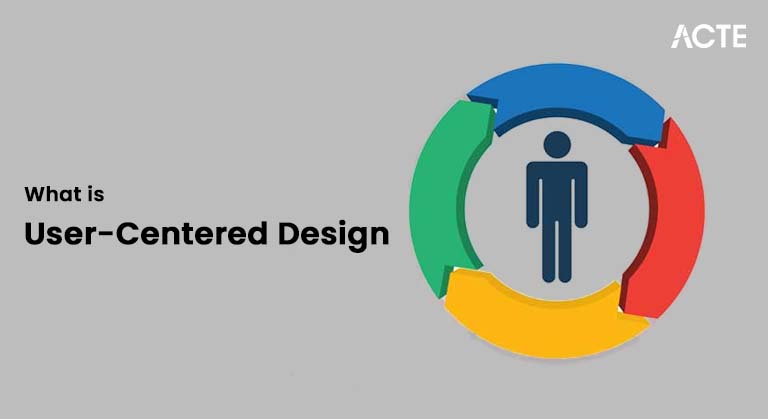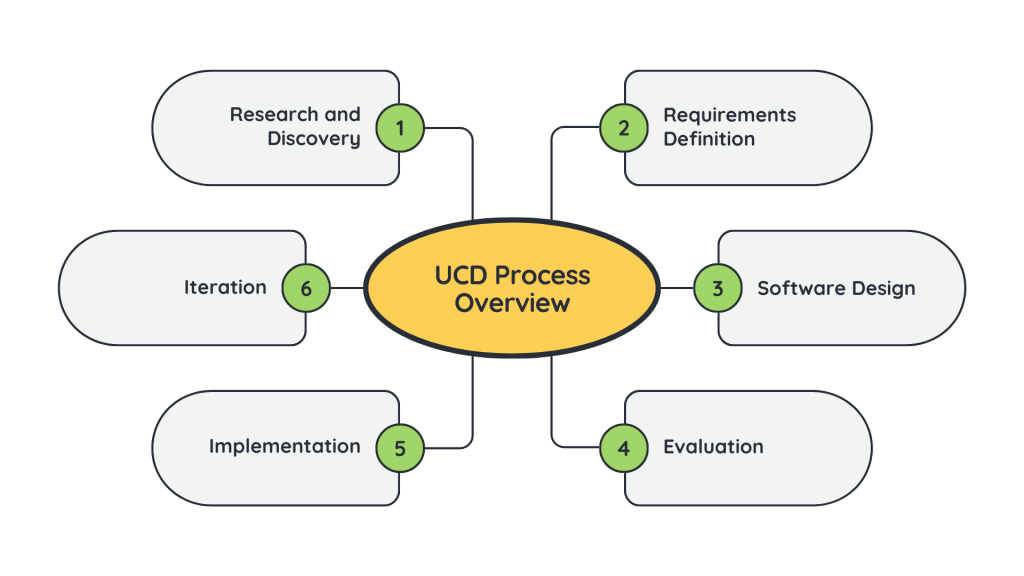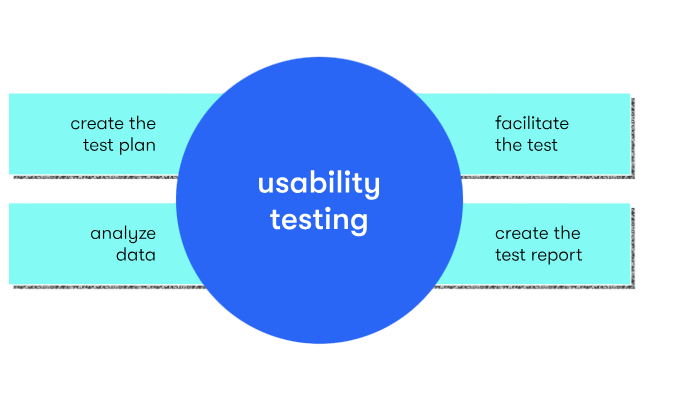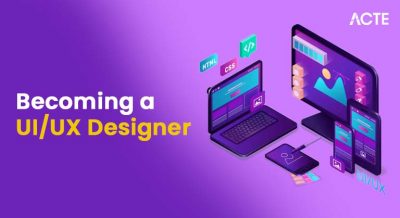
- What is User-Centered Design (UCD)?
- Importance of UCD in UX
- UCD Process Overview
- Conducting User Research
- Creating Personas
- Scenario and Journey Mapping
- Iterative Design and Feedback
- Usability Testing
- Accessibility in UCD
- Tools for UCD
- Case Studies of UCD
- Challenges and Best Practices
- Conclusion
What is User-Centered Design (UCD)?
User-Centered Design (UCD) is a framework of processes in which the needs, wants, and limitations of end users are given extensive attention at each stage of the design process. UCD places users at the heart of the design and development lifecycle, ensuring that products are optimized for usability and relevance. The primary objective is to enhance the user experience by understanding the user’s context, tasks, and goals.UCD is iterative in nature, involving continuous testing and refinement based on user feedback. It bridges the gap between what users need and what technology can offer by combining empathy-driven research with practical UI/UX Design Training execution. This methodology is employed widely in fields such as software design, product development, website creation, and mobile app design.
Ready to Get Certified in UI/UX Design? Explore the Program Now UI/UX Design Online Training Offered By ACTE Right Now!
Importance of UCD in UX
UCD in UX plays a pivotal role in User Experience (UX) design because it ensures that products are not only functional but also meaningful and engaging. It reduces the risk of product failure by basing decisions on real-world user data rather than assumptions. When user needs are integrated into every phase of the software design, it results in improved usability, accessibility, satisfaction, and ultimately, business success.
Effective UCD in UX can lead to:
- Reduced development costs due to fewer post-launch revisions
- Higher user satisfaction and retention
- Increased accessibility and inclusivity
- Competitive differentiation in crowded markets.
- Better alignment with business objectives through focused user insights
UCD Process Overview
This iterative loop User-Centered Design ensures that the product evolves based on actual user interactions, making UCD a dynamic and flexible approach. The User-Centered Design process typically follows these core stages:

- Research and Discovery – Understanding users, their environments, and challenges.
- Requirements Definition – Determining user and business needs.
- Software Design – Creating wireframes, prototypes, and information architecture.
- Evaluation – Usability testing and feedback integration.
- Implementation – Building and launching the product.
- Iteration – Refining the product based on ongoing feedback and analytics.
Conducting User Research
User research is the cornerstone of UCD in UI/UX Training. It helps uncover user behaviors, needs, motivations, and pain points. Data collected through these methods informs persona development, scenario creation, and design decisions. It also helps prioritize features and functionalities. Techniques include:
- Interviews and Surveys – Directly engaging with users to collect qualitative and quantitative data.
- Observations – Watching users interact with similar products or environments.
- Contextual Inquiry – Studying users in their natural environment.
- Competitive Analysis – Assessing existing products for benchmarking.
- Name and demographic details
- Goals and motivations
- Challenges and pain points
- Behaviors and preferences
- Emotions and reactions
- Pain points and frustrations
- Opportunities for improvement
- Low-Fidelity Prototypes – Quick sketches or wireframes to test concepts.
- High-Fidelity Prototypes – Interactive mockups resembling the final product.
- A/B Testing – Comparing two versions to identify the better performer.
- Moderated Testing – Facilitator guides the session.
- Unmoderated Testing – Users complete tasks independently.
- Remote Testing – Conducted via video conferencing or testing platforms.
- Task success rate
- Time on task
- Error rate
- User satisfaction scores
- Color contrast for visual impairments
- Keyboard navigation for motor impairments
- Screen reader compatibility
- Text alternatives for images
- User Research: Dovetail, Lookback, Optimal Workshop
- Prototyping: Figma, Adobe XD, Sketch
- Usability Testing: Maze, UserTesting, Hotjar
- Journey Mapping: Miro, Smaply, UXPressia
- Accessibility Evaluation: Axe, WAVE, Lighthouse
- Budget and time constraints
- Limited access to real users
- Conflicting stakeholder interests
- Misunderstanding of UCD within teams
- Involve users early and often
- Foster cross-functional collaboration
- Embrace failure as a learning opportunity
- Use both qualitative and quantitative data
- Maintain a usability testing schedule
- Document findings and share insights widely
To Explore UI/UX in Depth, Check Out Our Comprehensive UI/UX Online Training To Gain Insights From Our Experts!
Creating Personas
Personas are fictional yet realistic representations of different user types. Creating personas helps keep the software design team focused on the end users during decision-making. Well-defined personas bring clarity to whom the design is serving and encourage empathy. Each persona typically includes:
Scenario and Journey Mapping
Scenario Mapping involves creating stories or situations where a user might interact with the product. These narratives provide context for how and when the product will be used.
Journey Mapping visualizes the user’s experience across different touchpoints. It highlights:
These tools enable designers to identify moments of delight or disappointment and optimize the flow accordingly.
Iterative Design and Feedback
Iterative Design is essential in UCD. Each cycle of iteration should incorporate real user feedback to validate assumptions and improve usability. This helps in identifying and resolving issues early. It involves designing, testing, analyzing, and refining:
Usability Testing
Usability testing ensures that the product is easy to use, intuitive, and efficient. Findings from usability tests guide refinements and help ensure the product meets user expectations. Methods include:

Key usability metrics:
Looking to Master Machine Learning? Discover the UI/UX Design Expert Masters Program Training Course Available at ACTE Now!
Accessibility in UCD
Software Designing with accessibility in mind ensures that products are usable by people with disabilities. Adhering to guidelines such as WCAG (Web Content Accessibility Guidelines) promotes inclusivity and often leads to a better experience for all users, not just those with disabilities. Considerations include:
Tools for UCD
Several tools support the UCD process across different stages. These tools help in organizing research, creating designs, conducting tests, and evaluating performance:
Case Studies of UCD
Google Search Redesign:
Google used UCD principles to simplify the search results page. Through extensive user testing, they removed clutter and improved the focus on core content, resulting in increased user satisfaction and engagement.
Airbnb’s Host Interface:
Airbnb revamped its host dashboard after identifying key pain points through contextual inquiries. The new design offered simplified navigation, better calendar integration, and faster booking management, improving host satisfaction.
Microsoft’s Inclusive Design Toolkit:
Microsoft developed its design toolkit using UCD and accessibility principles. It emphasized personas with disabilities and empowered teams to create universally accessible software.
Preparing for UI/UX Design Job Interviews? Have a Look at Our Blog on UI/UX Design Interview Questions and Answers To Ace Your Interview!
Challenges and Best Practices
Challenges:
Best Practices:
Conclusion
User-Centered Design is more than a methodology it’s a mindset that places users at the core of every software design decision. By leveraging user insights, iterative feedback, and inclusive practices, UCD UI/UX Training ensures that products are not only functional but also enjoyable and meaningful to use. In a digital world where user experience defines success, mastering UCD is essential for designers, developers, and business leaders alike. Whether you’re building an app, a website, or a physical product, UCD offers a proven path to innovation, satisfaction, and lasting impact.




